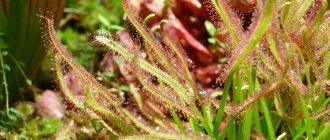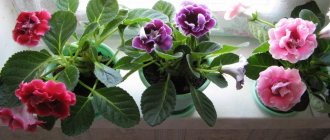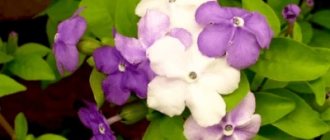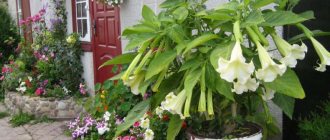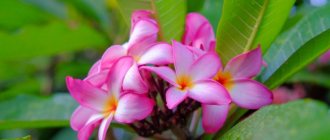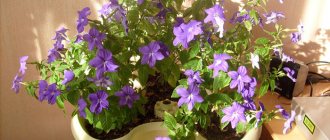Gloxinia indoors has many fans; they form clubs, hold exhibitions, publish catalogs, and exchange experiences and planting material. This is not surprising - the flowering plant looks so impressive that it immediately makes you fall in love with it. There is terry gloxinia with simple corollas similar to velvet gramophones, monochromatic, speckled, edged along the edge. At the same time, caring for the crop is not difficult, and it blooms long and luxuriantly.
Gloxinia or Sinningia
There are two separate genera in the Gesneriaceae family:
- Gloxinia, growing in northwestern South America;
- Sinningia, originating from the tropics of Brazil.
From a botanical point of view, they are close, but not identical.
Some species have been transferred from genus to genus, including Sinningia speciosa. It was she who became the ancestor of the popular indoor flowers all over the world, known as gloxinia. This is not a scientific, but an established name for varieties and complex hybrids obtained by crossing Sinningia the Beautiful with other natural species.
Several representatives of the genus Sinningia are found in culture, but they are not called gloxinia.
Similar flowers
Indoor crops are similar to Gloxinia Sonata:
- Streptocarpus is a relative of Gloxinia from the Gesneriev family. A perennial herbaceous plant without a stem, 5 to 30 cm high.
- The representative of the Gesnerievs is Achimenes. It is popularly called “nettle” for its pubescent, elongated leaves.
- Another flower from the Gesneriev family is Koleria. Its leaves are velvety, dark green. The flowers are shaped like an elongated modified bell with five large petals of different colors.
- Campanula resembles Gloxinia in flower shape. Characterized by abundant flowering.
- Royal pelargonium or geranium is famous for its large, densely double flowers. It has an oval spot of contrasting color in the middle of the petal, which gives it an unusually beautiful appearance.
Gloxinia Sonata does not require special care and will decorate any interior.
Description and characteristics of the plant
Species Sinningia Beautiful or Beautiful is endemic to Brazil. It has several varieties that easily cross with other species. It is a herbaceous perennial plant up to 45 cm high with a short stem.
The leaves are thick, juicy, dark green, oblong to ovate, covered with thick hairs, wrinkled. The length and width depend on the growing conditions and are about 8-25 and 3-15 cm, respectively.
Flowers are from 3 to 6 cm, open in summer. They look like a bell, collected in 2-3 pieces. The corolla consists of a medium-sized tube and a violet or lilac, rarely (in varieties) white, red asymmetrical limb with five petals.
The underground part is a modified thickened shoot (tuber) without a bottom or protective shell, with several growth points and thin adventitious roots. In Sinningia the Beautiful it is irregularly round in shape, flattened at the poles.
The species looks much more modest than the varieties or hybrids, and blooms less profusely. Dwarf species of Sinningia took part in the creation of miniature gloxinias, which have been especially popular recently:
- Concinna (Sinningia concinna) with tiny purple flowers;
- Conspicua (S. conspicua), distinguished by creamy white corollas.
Hybrid gloxinia is much more beautiful than the species; it blooms profusely from March to August; some varieties, if properly cared for, last until September or October. The corollas reach a length of 10-12 cm.
The color of the petals is usually rich, monochromatic or combined, white, pink, scarlet, blue, purple. Only yellow is missing in the color scheme - this is why gloxinia looks like a violet. The inside of the corolla is usually colored differently, often covered with dark speckles.
An adult plant can produce 10 buds at the same time.
Gloxinias are divided into groups according to the size of the bush:
- standard – socket 20 cm or more (Yesenia);
- compact – plant diameter 12.5-20 cm (Gloxinia Cleopatra);
- mini – leaf span 5-12.5 cm (Marshmallow);
- microminiature varieties - up to 5 cm (Victory Parade).
All gloxinias fall into a state of deep dormancy in the fall. The above-ground part of the flower dries out completely, and after 2-3 months it resumes growth from dormant buds on the tuber. Without division, with proper care, it can live up to 10 years, increasing in size every year.
Gloxinia Royale is not listed in plant taxonomy, even as a synonym, but Sinningia regina is among the unconfirmed (doubtful) species.
Varieties
Botanists count from 20 to 25 species of gloxinia , but only varieties and hybrids bred on the basis of several species and their varieties are grown as home crops: speckled gloxinia, royal siningia, beautiful siningia, terry gloxinia.
Appearance and features
Gloxinia Sonata is a variety series of hybrids bred on the basis of double varieties of gloxinia. It is distinguished by a large number of large pink, purple or red flowers on one plant, and a compact leaf rosette.
The most famous types are:
"Sonata Light-purple"
It has flowers with a wide-open, goblet-shaped purple-violet throat and delicate lilac-white petals edged with lilac.
"Sonata Pink"
A hybrid having a flower with a deep coral pink throat and white and pink petals.
"Sonata Rose"
An exquisite pink hybrid, the throat of the flower is two-colored , dark pink or rose red above, cream below with cherry specks.
"Sonata Red"
Intense red hybrid.
In flower shops you can find Gloxinia Sonata seeds marked “mix”. This is not a separate variety, but a mixture of several hybrids of this variety series with flowers of different colors.
There are many other types of gloxinia in the world; we talked about them in more detail here:
- Kaiser Wilhelm and Friedrich.
- Shagan.
- Krasnoyarsk
- Brocade.
- Rosalind.
- Yesenia.
- Terry white.
- Gloxinia Pink.
- Gloxinia hybrid.
- Climbing vine - Gloxinia lofos.
Selection rules
Collectible plants are not found in retail chains, unless the owner or seller of a small shop is engaged in growing flowers himself. There you can usually buy Dutch or greenhouse-grown stamping.
Industrial gloxinia is much easier to care for at home than collectible gloxinia, and is often no less beautiful. Beginners are recommended to choose this one.
When purchasing, you should inspect the bush. The leaves must be fresh and elastic, without damage, stains, plaque, or other marks that may remain from careless handling, diseases or pests.
The next obligatory sign is that the plant has many buds that have not had time to bloom. When potential owners need a specific color, it is better to take a gloxinia that has at least one flower open.
It is better to refuse to buy a plant you like if the tuber is not visible. It was planted incorrectly or did not have time to develop the underground part in a volume sufficient for the gloxinia to survive in the winter.
A good sign is that the tuber is buried no more than 2/3 into the ground, the rest is on the surface, elastic, without signs of spoilage.
Author's varieties or hybrids are purchased by:
- at exhibitions;
- via the Internet on professional websites.
If you purchase a gloxinia tuber, you need to make sure that it is not wrinkled, cracked, coated with any color, rotten or spotted. It is better to take it at the end of winter or beginning of spring - just before planting.
Origin
The genus Gloxinia belongs to the Gesneriaceae family. The flower's homeland is the tropical zone of two American continents. In nature, Gloxinia settles along river banks, under the canopy of dense forests, and is found on the mountain slopes of the Andes. It is a perennial flowering plant, sometimes forming small subshrubs.
The plant got its name from the name of the famous botanist Gloksin, who discovered the beautiful flower. Another botanist, gardener Wilhelm Sinning, who devoted his life to creating new hybrids and varieties of gloxinia, immortalized his name in the second name of the flower. Domestic varieties of gloxinia are also called Sinningia.
Homeland of the plant
What to do with a flower after purchase
The vegetative plant is quarantined for at least 2 weeks. You need to water gloxinia especially carefully at this time, do not expose it to direct rays, and regularly inspect to see if previously unnoticed signs of pests or diseases have appeared.
If everything is in order, after 14 days the plant begins to be accustomed to bright conditions, gradually moving to a brighter place. You cannot immediately place a flower pot on a sunny windowsill - the plates will burn and the buds may fall off.
Leafy gloxinia cannot be replanted.
When a tuber of poor quality is purchased online, you need to try to correct the situation:
- Dry, wrinkled ones are wrapped in a damp cloth and inspected periodically. Gloxinia should be planted when the surface has straightened out a little, but no later than after 3 days. You can’t immerse it in water or wrap it in cellophane - the tuber will suffocate and definitely won’t germinate.
- Rotten areas are cut out, dried during the day, and soaked for 30 minutes in a solution of foundationazole or other fungicide. Let it dry, sprinkle the wound with crushed coal.
If more than half of the tuber has rotted, and dark spots or veins are visible on the cut, you can only throw it away.
Gloxinia Winter Cherry
Unfortunately, the author of this magnificent variety is unknown, but this does not detract from the merits of the plant with bright double flowers of original color. Gloxinia Winter Cherry is a semi-miniature plant, so its corollas are small, but unforgettable. White bells are densely strewn with large cherry spots. The calico color of the flowers becomes somewhat lighter towards the wavy edges. The shape of gloxinia bells is very similar to fantasy roses. The variety is characterized by small green foliage with a fleecy surface.
How to care for gloxinia
Caring for gloxinia at home is rated as easy with little difficulty. The main problem is to properly store the tuber during the dormant period.
Watering and air humidity
During the flowering and active growing season, plants need regular and abundant irrigation. The soil in a pot with gloxinia should dry out only 1-2 cm; it is important to prevent stagnation of water or souring of the substrate. The liquid is removed from the pan after 20-30 minutes.
The plant can be watered from the bottom as well as from the top. But in the latter case, water must not get on the tuber or leaves. The liquid should be soft, at room temperature.
After all the buds have withered, from late summer or early autumn, irrigation is gradually reduced, and when the above-ground part of the flower dries out, it is reduced to a minimum. Be careful not to overdry the tuber.
Young gloxinia, which has not had time to grow the underground part, grown this season from seeds or cuttings, continues to grow during the dormant period. It is watered carefully but regularly so that the root or young small tuber does not dry out even for a short time.
Leafy plants need high humidity at all times. But you cannot spray water on the plates or flowers:
- liquid from the velvety surface takes a long time to evaporate;
- putrefactive processes may begin;
- if direct sun hits the water drops, there will be a burn;
- ugly whitish marks that cannot be erased from the hair-covered plates will definitely remain.
To increase humidity:
- splash air around the flower;
- place bowls of water next to them;
- wet pebbles are placed in the tray;
- buy a household humidifier;
- Place the pot with the plant in a larger pot, and fill the gap with wet sphagnum.
Lighting and temperature
Daylight hours for the plant should be 12-14 hours a day - if it is shorter, few flowers will form. The sun needs to be bright, but without direct rays at midday. Windows in an eastern or western direction are suitable; in the south, in the middle of the day, the gloxinia is covered with a light curtain.
If the flower is happy with everything, the stem is short and the plates are directed horizontally. When there is not enough light, the leaves and shoots of the plant stretch upward.
The recommended temperature in summer is about 20° C, it is advisable that it does not go beyond 18-25° C. In hot weather, you need to increase the humidity in the room, ventilate it more often, and turn on the air conditioning. In winter, the optimal temperature for a flower is 10-12° C.
Gloxinia should not be taken outside or onto the balcony in summer. The plant does not like drafts, standing in front of a fan or under a stream of air from an air conditioner.
Feeding
From spring until the end of flowering, gloxinia must be fertilized. The first 2 times, if the leaf apparatus does not grow quickly enough, you can use preparations for ornamental foliage plants diluted twice as much as indicated on the package.
Then apply specialized fertilizers for violets according to the instructions. Complete mineral fertilizers are also suitable for flowering crops, but they need to be diluted 2 times more and used every 7-10 days.
After the formation of buds stops, the plants are not fertilized.
How to care during flowering
After the first wave of flowering, which lasts about 2 months, gloxinia is cut off, leaving a column with 2-4 lower leaves. Feed with a mineral complex for decorative deciduous crops.
Stepchildren will begin to form in the axils; they are removed, leaving the 2 strongest ones, otherwise the plant becomes too dense, but the buds are formed weakly and small. They provide fertilizer for violets.
Growing gloxinia of some varieties and hybrids does not require pruning - they produce flowers continuously until autumn. The signal for surgery should be the absence of buds.
Care during the rest period
When the plant stops blooming, in late summer or early autumn, gradually reduce watering. By the time the leaves and stem dry completely, they need to be reduced to a minimum so that the tuber does not dry out, and the above-ground part should be cut off, leaving a stump of 1-2 cm.
If a mature plant does not want to go to rest, despite reducing watering, the owners will have to trim the leaves themselves.
The tubers can be left in the pot or taken out, cleaned of soil and placed in peat or sand. They are stored at a temperature of 10-12° C, or in the vegetable section of the refrigerator, on a glassed-in loggia. As a last resort, the pot with gloxinia is placed under the bath - it is cool and humid there.
The soil in the container or substrate where the plant tubers overwinter should be carefully watered occasionally. They should not rot or dry out completely.
First-year flowers do not retire, they require normal maintenance, only fertilizing is done once a month, watering is less. The plant is illuminated for up to 10-12 hours per day.
Gloxinia begins to be brought out of hibernation at the end of January or beginning of February. The older the plant tuber, the longer it should rest.
Awakening a flower, step by step:
- Remove the gloxinia from the pot or bag, shake off the substrate, remove dry adventitious roots, and rinse so that the tubers can be clearly examined.
- If necessary, peel to living tissue, dry, treat with crushed coal or fungicide.
- Place in a plastic bag with a small amount of moist, fertile soil.
- Bring the temperature to 25° C, provide lighting for at least 10 hours a day.
- After the sprouts appear, plant the gloxinia in fresh substrate.
It is recommended to monitor the tuber - the plant may wake up on its own and produce long, elongated, whitish stems.
Location
Indoor flowers of the gloxinia genus require bright but diffused light. Pots with plants can be placed on the windowsills of east or west windows. On the south side, the sun can burn the delicate foliage of gloxinia; the flower will have to be protected from the rays with tulle or white lutrasil.
The plant requires a daylight period of at least 12 hours. If natural light is not enough, additional lighting with fluorescent lamps will be required.
Advice . The position of gloxinia foliage can indicate a lack of lighting. If the leaves are raised up, the flower does not have enough light. In a comfortable state, the leaves have a horizontal position.
Comfortable temperature for the growth and flowering of gloxinia is +22 +24 degrees. It is better to avoid drafts and sudden temperature changes (during ventilation). During the dormant period, containers with tubers are kept at a temperature of about 10 degrees Celsius.
How to replant gloxinia at home
The operation is recommended to be performed annually. It is not necessary to take a new pot, but the substrate needs to be changed, even if it seems good, and the flower has spent the winter in a flowerpot.
Choosing soil and pot
A wide, low bowl is suitable for the plant, usually with a cross-section of up to 12 cm, with several holes in the bottom for water drainage. Drainage is required. Some gardeners prefer to transplant gloxinia into a regular-shaped pot, with a diameter 4-6 cm larger than the tuber, and pour a lot of expanded clay on the bottom. This way it will produce flowers faster.
The soil for gloxinia needs slightly acidic, light, permeable soil. Ready-made mixtures “Violet” or “Begonia” are suitable. You can make a substrate for the plant yourself from disinfected components:
- leaf soil - 3 parts;
- peat – 1.5;
- sand or vermiculite – 1.
Planting gloxinia in heavy soil leads to rotting of the underground part.
Transplantation process
As soon as a sprout appears on the tuber, the flower is planted in fresh soil:
- Drainage is placed at the bottom of the pot, and a layer of substrate is placed on top.
- A gloxinia tuber is placed in the center.
- Cover with soil so that after compaction, half or a third rises above the ground.
- Carefully water the flower into the tray.
- When water comes to the surface, remove excess liquid.
- Cover the pot with the plant with a transparent film and expose it to the light.
- Contain gloxinia at 20-25° C and high humidity.
When 2 leaves appear, leave the flower covered only overnight to protect it from temperature changes. After 5 days, the cellophane is removed completely.
Terry splendor
Gloxinia Zaznoba looks very attractive. Its double flowers have a large diameter and are white in color. The petals are covered with peas of a violet-purple hue, there is a lilac border with a violet tint. The variety is characterized by compact bushes.
Gloxinia Moon Shadow is a double variety, endowed with huge flowers. The petals have a wide purple frame; white inclusions add unusualness and tenderness to the flower. Among connoisseurs and professionals, the variety is recognized as a masterpiece.
Gloxinia Winter Cherry is similar in appearance to the previous variety, but its petals are decorated with small peas that play in burgundy and purple colors. The bushes look very beautiful in pots on window sills; the decorative effect is emphasized by a compact, neat bush with short peduncles.
Gloxinia Cleopatra is a double variety. An inexperienced person will not immediately be able to distinguish it from the Winter Cherry variety, which is due to its external identity.
One of the most beautiful terry varieties is the Milky Way variety. It immediately amazes with its luxury, unusualness and grandeur. The diameter of the flowers is very large. On the white petals there are specks (violet, lilac), along the edges the colors are less bright, which adds sophistication. The leaves are endowed with a silvery vein, the base of the leaf itself is light green. The peduncles of this variety are of medium length, but this does not reduce its visual appeal.
Varieties with unusual or solemn names are especially popular. For example, Gloxinia Calico Wedding. It can be presented to spouses as a symbolic anniversary gift. On the white background of the petals there are specks of lilac color. There is a thin rim at the edges (the specks there are very thick, the color is lilac). Terry Sudarushka is distinguished by its romance and playfulness. Medium-sized polka dots are clearly visible on the white petals. Their color is red with a pink tint. Sudarushka has strong peduncles and compact bushes.
The Pani Valevskaya variety is distinguished by its extraordinary decorative properties. The main color of the flowers is white, they are double. The border stands out clearly against the white background, as it itself is crimson-red. Compact bushes have small but strong peduncles.
Gloxinia Crimson Study has a red frame around the edges. On the petals you can see not only dark red polka dots, but also streaks, which adds exoticism. The peduncles of this variety are long.
Gloxinia Charm captivates with the contrast of a delicate terry white base and a rich pink frame around the edges. Bright pink peas are randomly placed throughout the flower. The flower stalks are medium-length and particularly strong; the bushes are neat and compact.
Reproduction methods
Indoor gloxinia flowers are not difficult to propagate, but only if everything is done correctly. The best time for vegetative propagation of plants is late spring or early summer, especially for varieties or hybrids that require pruning after the first wave of flowering. Then you can grow gloxinia from “waste”, and the vegetative organs are already mature enough to take root and produce offspring.
After flowering in the fall, the plant prepares to retire; life processes die out. Reproduction of gloxinia after the end of the buds, as a rule, ends in failure.
Leaf
The most common method of propagating a flower. You can grow gloxinia from a whole plate or a fragment of a leaf taken from the middle tier of a bush. The old ones, the lower ones, finish their life cycle and, at best, give birth to few children. The upper ones, the young ones, will first put out roots and continue their own development; only when they reach maturity will they begin to produce offspring.
The leaves of the plant are rooted whole:
- in perlite;
- light substrate;
- vermiculite;
- peat;
- sand;
- water.
They can be divided into fragments by removing the thick central veins, dried and rooted. Sometimes cuts are made on the gloxinia plate, pressed to the substrate, secured to ensure better adhesion, and covered with glass or cellophane. Babies will appear from every wound. When the rosettes grow a little, the tiny gloxinias are transplanted into small plastic cups with light soil.
If, after separating the children, the leaf plate or its fragments are fresh and elastic, you can update the sections and re-root.
stem
The “extra” pieces of shoots remaining after the first wave of gloxinia flowering are cut, dried, and rooted in water or a light substrate. Such a plant will produce flowers faster than children obtained from a leaf.
By dividing the tuber
It is recommended to propagate gloxinia from tubers with a diameter of at least 6 cm, healthy, with several growth points. After the plant emerges from the dormant period, they are divided into parts so that each has at least 1 bud or an already hatched stem.
The cut is dried and treated with crushed coal or fungicide. They are planted, not completely buried, in a light substrate, and watered very carefully.
Seeds
Gloxinias are sown in spring on the moistened surface of steamed peat. They don't sprinkle it. Cover with glass or transparent film and keep at high humidity and temperature. Remove the cellophane after the sprouts appear, pick up the plants in the phase of 2 true leaves.
Gloxinia seeds with simple flowers of various colors are usually sold under the name “mix”.
Gloxinia Blanche de Meru
The Gloxinia Blanche de Meru shown in the photo is easily recognizable by its large flowers with crimson petals and a white throat. The leaf rosette of the plant reaches 25 cm in diameter, and good care helps to maintain not only velvety large leaves, but also stimulates long-term, lush flowering from late spring to early autumn.
If gloxinia is exposed to direct sunlight, both velvety leaves and flowers may suffer. There are fewer of them, the opening buds are paler in color and fade faster.
Problems during cultivation
The plant's immunity can be considered average. Owners may encounter difficulties:
- pale plates – nutritional deficiency;
- buds fall off from dry air, drafts, temperature changes;
- no flowers – the plant is too young, violation of the rules for storing tubers, gloxinia “missed” the dormant period;
- spots on the leaves remain from water;
- large whitish marks on the plates – sunburn;
- Gloxinia tubers rot during wintering due to an excessively wet substrate;
- dry out due to lack or too little watering;
- The leaves of the plant rise from the heat, and fall when the temperature is low.
The owners should be alarmed by the fact that deep notches have appeared on the edges of the sheet plates. Gloxinia lacks boron, which is especially dangerous for the bulb. Make a 2% borax solution and water once.
Most common types
Gloxinia Royal is one of the most popular and frequently encountered representatives. Its peculiarity is its small height (up to 10 cm), but the plant has strong shoots. They contain about 12 leaves, and they usually stand in pairs. The leaves themselves are quite large and can reach 20 cm in length. They have an interesting shape, resembling an oval. They are also characterized by a specific green color. The flowers have a dark purple color, they are quite large, since their diameter is on average 7 cm. They are pleasing to the eye in the summer.
The beautiful Gloxinia resembles the Royal one in appearance. The leaves of the plant have a slightly different color, since their shade is somewhat lighter. In addition, its leaves do not have silver veins. The beautiful Gloxinia has large flowers. They are most often purple, but purple variants may also occur.
Yesenia is popular among flower growers due to the fact that its flowers are double, and this looks very attractive from the outside. Their color is usually burgundy or beetroot. The flowers on the bush are placed abundantly, and the bush itself is compact. The leaves on the outside resemble velvet.
Diseases and pests
Root or gray rot appears on the plant due to heavy watering at low temperatures. Treatment is to remove the affected tissue and treat with a fungicide. You may need to replant; sometimes you have to take healthy shoots or leaves for rooting and throw away the flower.
Gloxinia plants suffer from pests:
- spider and cyclamen mites;
- thrips;
- aphids.
They will have to be controlled with appropriate insecticides. If scale insects or mealybugs appear, it is easier to discard the plant.
Photo
In the photo you can see the beauty of Gloxinia Rosalinda.
Gloxinia is one of the plants that are valued for their decorative foliage and very beautiful flowering. Growing it is a pleasure. We will tell you about the most popular varieties of this beauty. Read about these types: Kaiser Wilhelm and Friedrich, Sonata, Shagane, Krasnoyarysk and Little Red Riding Hood, Brocade, Yesenia.
The best varieties of exotic beauty
The number of hybrids and varieties of exotic beauty is so diverse that flower growers, to simplify the task, divided them into several groups. The key parameter is the shape of the flower. For example, the “Tidea” group combines varieties with corollas that have an expanded base and a concave apex. The Compact group includes small-sized plants, the diameter of whose leaves does not exceed an ordinary coin.
Depending on the size of the rosettes, synningias are divided into 4 groups:
- microminiature – up to 5 cm high;
- miniature – up to 12.5 cm high;
- compact – up to 20 cm high;
- standard – more than 20 cm.
Miniature and microminiature varieties are characterized by shortened stems of leaf blades. The annual growth of plants is achieved due to the appearance of new rows of leaves, which, like an umbrella, partially cover the previous ones. The ampel shapes look very interesting. Thus, the varieties “Deep purple” and “Tinkerbells” are advantageous in the sense that they are easy to form, quickly grow green mass and at the same time bloom continuously.
Sinningia Deep purple
The most decorative varieties are famous for:
- Treva's Treasure - bushes with medium-sized oval leaves and double tubular flowers. The pattern of petals, painted in light lavender color, is complemented by dark lilac-violet “strokes” and “rivulets”.
- Ozark First Born - has small ovoid leaves of a dark green color and large buds of a pink-violet hue, the petals of which are decorated with contrasting stripes and edging.
- Ugly Girl is a crop with small quilted leaves that form neat rosettes and graceful salmon-pink flowers. The buds are shaped like tiny jugs, the neck of which is decorated with a contrasting white and lilac pattern of dots and stripes.
- Krezdorn Yellow - bushes with small leaves, penetrated by a large number of glands, and medium-sized flowers, the petals of which are long narrow ribbons.
- Orange Zinger - plants with round green leaves forming a compact rosette and expressive tubular buds. The outer part of the petals is bright orange, while the inner part is a darker shade with crimson splashes.
- Amizade - bushes with pubescent dark green leaves and original tubular-shaped flowers. The outer side of the petals is painted purple, the inner “neck” is white, complemented by yellow stripes.
- Connect the Dots is a crop with dark green leaves with reddish veins and tubular white flowers richly decorated with purple-lilac specks.
Sinningia Ugly Girl
Sinningia Orange Zinger
Sinningia Lisa
Sinningia Texas Zebra
Sinningia Speciosa Pink
Sinningia Gabriel's Horn
A worthy competitor to the crops described above can be the variety "Lisa" with double white flowers with a wide crimson-pink border. The variety “Reitzii” with large scarlet flowers hanging in clusters above spreading leaves, “Texas Zebra” with lilac-pink buds decorated with intricate patterns, “Speciosa Pink” with large crimson flowers looks very interesting. The Gabriel's Horn variety has a special charm. It has a double corolla, in which the outer flower is wider and shorter than the inner one.
Peculiarities
Reference! There are approximately 25 species in nature, all of which were bred from two main varieties: Gloxinia Krasivaya and Royal.
Among them I would like to highlight the Rosalind variety.
This beauty with an unusual name has a delicate and delicate aroma. The basic background of the buds is white with a crimson edging around the edge. The petals are large, wavy, cone-shaped. More than 12 buds can be placed on one peduncle , surrounded by bright green leaves. The variety is compact in size. With proper care, Rosalinda has abundant and long-lasting flowering.
Awakening of tubers
Gloxinia tubers begin to wake up at the end of February. At this point a transplant is required.
A tuber that has not yet awakened (there are no new growth points) cannot be planted in the ground and watered, it will simply rot.
If the tuber looks healthy, then it is given several weeks to wake up on its own.
Healthy and rotten tubers
If this does not help, you need to wake up the flower:
- The tuber is treated with a growth stimulator and placed in a plastic bag with wet peat.
- The bag is tightly closed and kept under bright, diffused sunlight or under a phytolamp at a room temperature of at least 24°C.
- It takes 1-2 weeks for the tuber to awaken, during which time the bag is not ventilated.
A sign that the gloxinia tuber has sprouted and is ready for planting will be drops of water on the bag. When they appear, the tuber is immediately moved into the ground.
Sometimes the tubers rot during wintering or they cannot be awakened. This does not always indicate poor care for gloxinia at home.
Botanist's opinion
The reason for this is often that many varietal gloxinias sold in flower shops have weak roots.
Such varieties are selected by breeders for their highly decorative flowers and are intended for cultivation as annuals.
The same situation occurs if last year the flower was over-watered with growth stimulants.
If the tuber has sprouted but has lost its elasticity, it is also not planted in the ground. First you need to “reanimate” him. You can do this in 3 ways:
- hold in a solution of a stimulant, for example Zircon (10 drops per 200 ml);
- wrap in damp cloth;
- plant in moist vermiculite.
The tuber is placed in the ground only when it becomes elastic again.
Types and varieties with photos
More than 30 species of Sinningia are known, including dwarf ones. Here are some of the most popular synnings.
Beautiful
Sinningia beautiful or beautiful (S. speciosa) - has light green, uniformly colored oval-shaped leaves. Tubular flowers with purple petals bloom in early spring.
Popular varieties:
- Fifiana;
- Emperor Frederik;
- Gregor Mendel.
Conspicua
Sinningia conspicua (S. Сonspicua) - a bell-shaped flower reaches a diameter of 5 cm. Its petals are colored beige, yellowish. Blooming flowers emit a pleasant lemon aroma.
Cardinal
Sinningia cardinalis (S. cardinalis) has white tubular buds.
Miniature Sinningia
Mini and microminiature varieties originate from other species that are small in their natural habitat. Here it is worth mentioning S. concinna with a rosette no more than 5 cm in diameter. From her the first miniature variety Cindy was bred.
Cindy
And tiny Sinningia (S. pusilla) became the source for most of the modern microminiature varieties.
Popular varieties of this species:
- Mont Blanc;
- Regina.
tiny
Mont Blanc
Regina
The miniature S. hirsuta and some others were also actively used in breeding work.
Khirsuta
FAQ
Is it necessary to replant gloxinia after purchase?
No, if you bought a plant that is already flowering. You need to wait until it goes into hibernation and only then remove the tuber from the pot.
What to do if gloxinia wakes up early
If the plant woke up before mid-January and the length of the sprouts has not yet exceeded 1 cm, the tubers can be left in hibernation for another 1-2 weeks. But you need to move them to a cooler place. If the shoots are longer and noticed at the end of January or beginning of February, then the plant is planted in the ground and cared for in the usual way.
How long does gloxinia live?
The average lifespan of a flower is 4-5 years. Some specimens live up to 10 years. It is believed that the older the flower, the more buds it has.
Why doesn't gloxinia bloom?
Gloxinia may not bloom due to lack of light, too low temperature, lack or excess of watering, or excessive nitrogen content in the soil.
